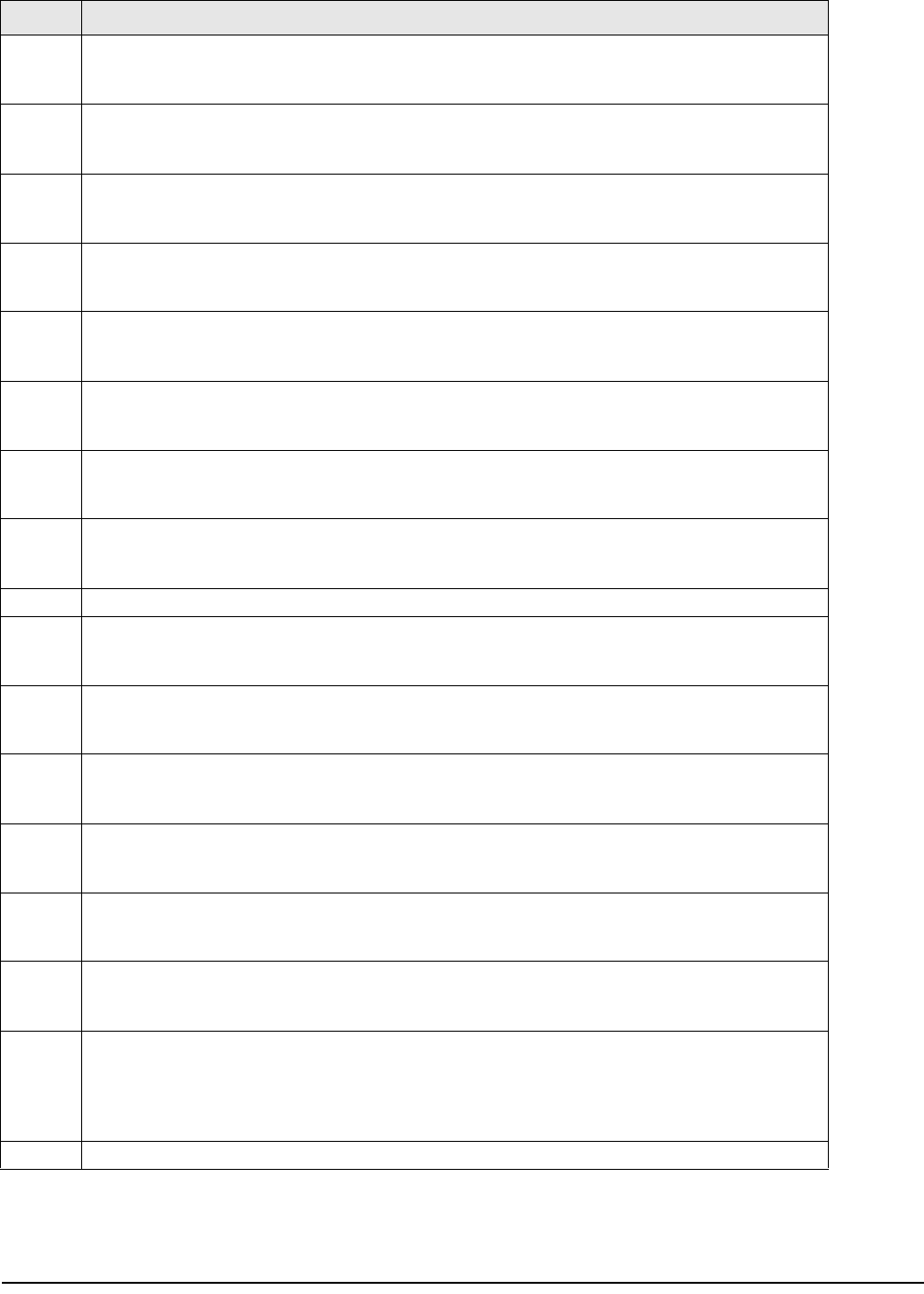Specifications
Table Of Contents
- About This Manual
- 1.0 Introduction
- 2.0 Installation
- 3.0 Configuration Settings
- 4.0 Calibration
- 5.0 Scale Operations
- 5.1 Weight Unit Switching
- 5.2 Entering Tare Weights
- 5.2.1 One-Touch Tare, Tare Unknown
- 5.2.2 Digital Tare, Tare Weight Known
- 5.2.3 Tare Addition or Subtraction
- 5.2.4 Tare Exchange
- 5.3 Toggling Between Gross and Net
- 5.4 Entering Unit Weights
- 5.4.1 Unit Weight Operation by Sampling
- 5.4.2 Unit Weight Operation by Key Entry
- 5.5 Part Accumulation and Negative Counting - Without Recalling an Item Code
- 5.5.1 Part Accumulation
- 5.5.2 Negative Counting
- 5.5.3 Clearing Accumulated Data
- 5.6 Toggle Between Scales
- 5.7 Adding Parts To and Subtracting Parts From Inventory
- 5.7.1 Adding Parts to Inventory
- 5.7.2 Subtracting Parts From Inventory
- 5.7.3 Sample, Count and Print a Label
- 5.7.4 Scan ID Bar Code, Count and Print a Label
- 6.0 Scale Programming
- 6.1 Item Code Storage
- 6.1.1 Checking Memory Status
- 6.1.2 Program ID Code, Unit Weight, Tare Weight, Label Format, Part Name, Part Number, Lot Number, Location, Inventory Quantity, Threshold, and Setpoints
- 6.1.3 Delete Item Memory
- 6.2 Using Item Codes in Normal or Operation Mode
- 6.2.1 Recalling Numeric Item Codes using Item Code Number
- 6.2.2 Re-Computing Item Code Unit Weight
- 6.2.3 Quick Add Item to Memory
- 6.2.4 Tare Override
- 6.2.5 Inventory Operations Related to the Item Code Quantity
- 6.2.6 Delete Item Memory
- 6.3 Setting Tare in Operation Mode
- 6.3.1 One Touch Tare
- 6.3.2 Digital Tare (When Tare Weight is Known in Advance)
- 6.3.3 Tare Value Exchange (Tare Addition or Subtraction)
- 6.4 Setting a Lot Number
- 6.5 Setting a Sequence Number
- 7.0 External Printers, Barcode Scanners, Keyboards and Platforms
- 7.1 Connecting External Printers
- 7.1.1 SPEC Settings for External Printers
- 7.1.2 Connecting the Printer to the RS-232C Port
- 7.1.3 Eltron Printers
- 7.1.4 Epson Printers
- 7.2 Connecting a Barcode Scanner
- 7.2.1 Header Codes
- 7.2.2 Z Commands via Barcodes
- 7.2.3 Configuring the RS232C Port for a Scanner
- 7.2.4 Connecting the Scanner to the RS232C Port
- 7.2.5 Configuring the Keyboard Port for a Scanner
- 7.2.6 Programming the QSC-6000 Plus Quickscan RS232C Scanner
- 7.2.7 Programming the QuickScan Keyboard Wedge Scanner
- 7.3 Connecting the IBM Keyboard
- 7.4 Connecting an External Platform
- 8.0 Job Sequence Programming
- 9.0 Password Protecting the Programming Functions
- 10.0 DC-100 Error Message List
- 11.0 DC-100 Limited Warranty

Configuration Settings 23
629
Weight Reset When Tare
0: Yes (DEFAULT)
1: No
630
Auto Clear Tare When Rezero
0: No (DEFAULT)
1: Yes
631
Initial Start Range Settings
0: +/- 2% full scale
1: +/- 10% full scale
632
Zero Range Settings
0: +/- 2% full scale
1: +/- 10% full scale2:
633
Zero Lamp Lighting Method
0: Gross weight (DEFAULT)
1: Net weight
634
Rezero When Changing Scale
0: No rezero (DEFAULT)
1: Rezero
635
Stability Check When Changing Scale
0: Stability check (DEFAULT)
1: No stability check
636
Internal Count Resolution (IR) Protected by Span Switch
0: No (DEFAULT)
1: Span switch protect
637
NOT USED
638
Display at Minus Weight
0: Minus display (DEFAULT)
1: Masked display
639
Masked Display at Minus Weight
0: Gross weight (DEFAULT)
1: Net weight
640
Overweight Masked
0: At +1D (DEFAULT)
1: At + 9D
641
Selection of Scale Starting Method
0: Auto start (DEFAULT)
1: Manual start
642
Weight Unit Convert
0: Yes (DEFAULT)
1: No
643
Gross Mode Display
0: Yes (DEFAULT)
1: No
644
Selection of Decimal Point Type
Sets whether the decimal point is displayed as a period (U.S. usage) or a comma (European, Latin
American, Asian usage)
0: Period display (DEFAULT)
1: Comma display
645
NOT USED
Spec Description
Table 3-2. DC-100 (142) Settings










